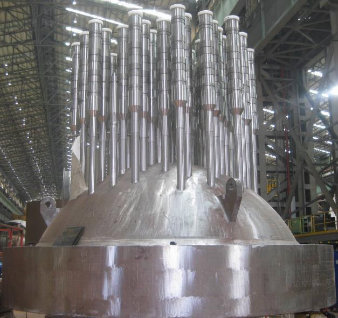Nuclear power plants with reactor vessel closure heads (RVCHs) containing Alloy 600 base materials and Alloy 182 weld materials are susceptible to primary water stress corrosion cracking (PWSCC). In response to this concern, a number of PWR utilities have replaced their RVCHs. Replacements also provide an ideal opportunity to implement upgrades; this significantly reduces outage duration and dose, as well as addresses personnel safety issues that may exist during reactor disassembly and reassembly.
To offer our customers a solution to this problem, Westinghouse has created a program to develop and implement RVCH upgrades integrated with the design and installation of a new RVCH that uses Alloy 690 and Alloy 152. Because these alloys aren’t prone to PWSCC, this is a risk- reducing option.
Replacing the RVCH is a complex activity, involving the integration of multiple organiza-tions concerned with the associated project management and control of numerous interfaces. Westinghouse has developed the expertise to manage these types of intricate projects, by utilizing lessons learned from previous successes. Our proficiency in project integration frees your staff to spend time on activities that have the most impact on plant operation and increases the reliability of plant performance.
Westinghouse can provide the following:
Replacing a RVCH which contain alloys susceptible to PWSCC provides the following benefits:
Westinghouse has led head assembly upgrade projects at a number of plants, ranging from ductwork reduction/optimization to implementation of integrated head packages (IHPs). IHPs eliminate the CRDM/CEDM ductwork, provide an integral missile shield, simplify cable configurations and offer a permanently attached head lift tripod. This allows the entire head assembly to be removed as one unit, thereby reducing long-term operating and maintenance costs.
Upgrades help to:
Westinghouse works closely with our customers to determine the level of support needed. To this end, we have created five levels of assistance:
A leading provider of replacement RVCH services, Westinghouse performs detailed engineering and design studies, supplies integrated head assembly upgrade equipment, cooperates with global manufacturers on head and CRDM/CEDM supply, and completes the component handling and installation at the site for new RVCH components.
Westinghouse has achieved the following successes:
RVCH replacement and upgrade services have been provided to 19 plants.

RVCH during Fabrication